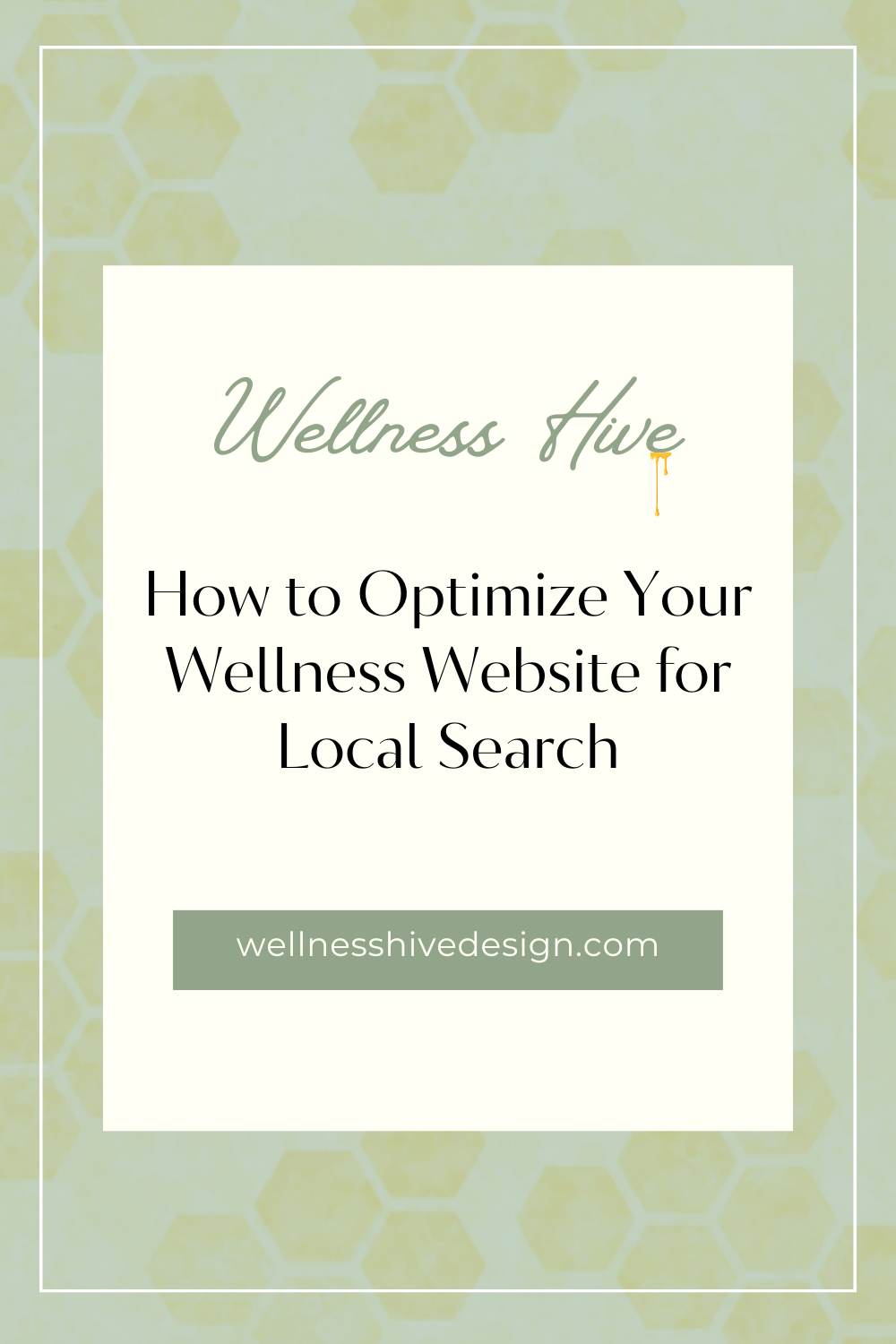How to Optimize Your Wellness Website for Local Search
In the health and wellness industry, local clients are often your most important audience.
Therapists, LMFTs, LCSWs, nutritionists, spa owners, health coaches, and holistic practitioners all rely on a strong local presence to attract nearby clients.
Optimizing your wellness website for local search is crucial for standing out in your community and driving more foot traffic to your business. At Wellness Hive Design Studio, we specialize in helping health and wellness professionals enhance their online visibility. In this blog post, we'll share essential tips to improve your local SEO and attract more clients from your area.
1. Claim and Optimize Your Google My Business Listing
Google My Business (GMB) is a free tool for managing your business's appearance on Google Search and Maps. A well-optimized GMB listing can significantly boost your local search presence.
Claim Your Listing: If you haven't already, claim your GMB listing. Ensure all your business information is accurate and up-to-date.
Complete Your Profile: Fill out every section of your GMB profile, including business hours, services, and a detailed description.
Add Photos and Videos: Visual content can enhance your listing and attract more clients. Include high-quality photos of your premises, services, and team.
Collect Reviews: Encourage satisfied clients to leave positive reviews on your GMB profile. Respond to reviews promptly to show that you value client feedback.
2. Optimize Your Website Content for Local Keywords
Incorporating local keywords into your website content can help search engines understand your location and services.
Use Location-Based Keywords: Include local keywords in your website’s meta titles, descriptions, headers, and throughout your content. For example, “nutritionist in [Your City]” or “spa services in [Your City].”
Create Localized Content: Write blog posts and articles that focus on local events, news, or issues related to health and wellness. This not only helps with SEO but also positions you as an active member of your community.
Optimize Service Pages: Ensure each service page on your website mentions your location. For example, “Holistic therapy services in [Your City].”
3. Ensure Your NAP Information is Consistent
NAP stands for Name, Address, and Phone number. Consistency across all online platforms is crucial for local SEO.
Check All Listings: Ensure that your NAP information is consistent on your website, GMB, social media profiles, and all online directories.
Update Changes Promptly: If you move or change your phone number, update this information across all platforms immediately.
4. Build Local Backlinks
Backlinks from reputable local websites can boost your local search rankings.
Partner with Local Organizations: Collaborate with local health organizations, schools, or community centers. Request backlinks from their websites to yours.
Guest Blogging: Write guest posts for local blogs and websites related to health and wellness. Include a link back to your website.
Local Directories: Ensure your business is listed in local online directories. These listings often include a link to your website, which can improve your SEO.
5. Leverage Local Social Media Engagement
Social media can play a significant role in local SEO and client engagement.
Engage with Local Content: Follow and interact with local businesses, influencers, and community pages. Share local content and events on your profiles.
Use Local Hashtags: Include local hashtags in your posts to increase visibility among local users. For example, #WellnessIn[YourCity].
Promote Local Events: If you’re hosting or participating in local events, promote them on your social media channels. Encourage attendees to check in or tag your business.
6. Create Location-Specific Landing Pages
If you serve multiple locations, creating a dedicated landing page for each area can enhance your local SEO.
Tailored Content: Customize the content on each landing page to address the specific needs and interests of clients in that location.
Local Testimonials: Include testimonials from clients in that area to build trust and relevance.
Service Information: Clearly outline the services you offer in each location, emphasizing any unique aspects or local specialties.
7. Encourage and Manage Online Reviews
Online reviews are a critical component of local SEO. They not only influence potential clients but also impact your search rankings.
Request Reviews: Ask satisfied clients to leave reviews on Google, Yelp, and other relevant platforms.
Respond to Reviews: Engage with reviewers by responding to their feedback, both positive and negative. This shows that you value client opinions and are committed to providing excellent service.
Showcase Reviews on Your Website: Display positive reviews on your website to build credibility and trust.
Conclusion
Optimizing your wellness website for local search is essential for attracting nearby clients and standing out in a competitive market. By implementing these strategies, you can improve your local SEO and ensure that your business appears prominently in local search results. At Wellness Hive Design Studio, we specialize in creating optimized, user-friendly websites for health and wellness professionals. Contact us today to learn how we can help enhance your online presence and attract more local clients.
Get in touch today about your site!
〰️
Get in touch today about your site! 〰️
Hi! I’m Cat - a Squarespace Web Designer living on the East Coast.
I’ve been designing and developing custom websites on Squarespace since 2020. Not only do I provide my clients with beautiful new websites, but I help you get found by your target audience. Feel free to reach out with any questions!


